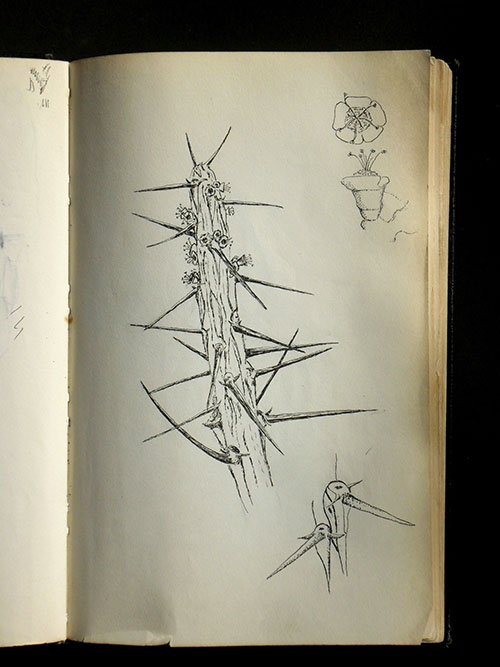Opportunities, Restraints, Time


I walked on mountains for the first time at age 19 and was so surprised and asked so many questions that people told me to take a geology course. I'd been told that the earth was young: my eyes told me otherwise. I sent an application to Iowa State and was on campus weeks later, enrolled in geology and graphics classes.
At Iowa State I took a course on evolution in which we simply read Darwin's text and thought it through. It made a profound impact on my thinking about life. At its simplest evolution depends on opportunities, restraints, time.
Artists evolve, too. Opportunities and restraints are co-joined and start with birth, the artist's interests and chosen medium. Artist's interests are wide ranging: the human form, social justice, landscape, etc. Plants have been a focus of mine since I was a teen. An artist's medium comes with opportunities and restraints and changes over time. Since high school I've preferred pen & ink.
I married a geology grad student and a few years later was at the Early Man Exploration Field Camp in Kenya, headed by Richard Leakey, along with my husband and many brilliant scientists. It was a privilege to be present at the fast moving arguments and discussions around the table or in the field.

Time passed, I met and learned from gardeners and horticulturalists and started to consider the garden as a laboratory or studio, watching and thinking about plants. I asked an artist/carpenter working at the studio whether I could use his leftover wood scraps for my work and he told me how to prepare wood panels.
Years passed, I became more interested in thinking about the interiors of plants: things that can't be seen rather than the allure of the exterior. Questions about lignin were awakened by wandering in the Paleo section of Houston's Natural Science Museum and by weeding and finding an intact bur clover seed with a mature plant attached. The shell of the "used" seed was curiously indestructible and gave the impetus for a series of work about the bur clover—as well as the series about lignin.
Lignin can be "seen" in chemical formulas. It is the structural material which forms cell walls, especially in wood and bark. It lends rigidity to plants so water can be brought from the ground to the top of a tree! It doesn't rot and seems indestructible, except for termites.
2020: the year of severe restrictions and quarantines. Having but four wood panels in the studio, I decided to break down thoughts of lignin into four parts: two aspects of function, the beginning (red algae) and the end (termites).
This has been a quick romp over 50 years looking at one artist, one subject matter and mainly one medium (pen & ink) during life's opportunities, restraints and changes—not good, not bad—just change.
This has also been a look at evolution and change. We hope we are nearing the end of this pandemic. The earth will go on changing, whether we're part of it or not. Let's try to change gracefully with it.
Penny Cerling lives and works in Houston, Texas. The Lignin Study was shown at Redbud Gallery, Houston in late 2020.



